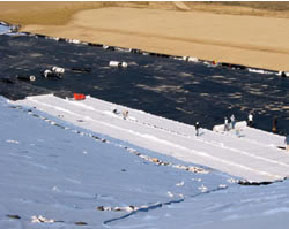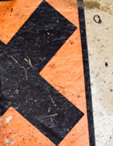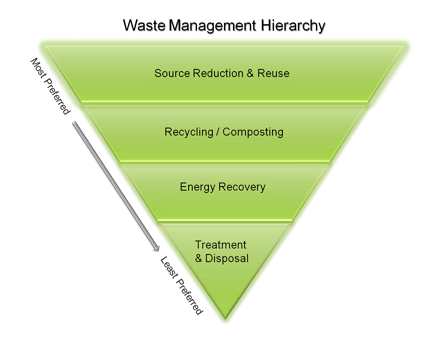
The landfill is currently taking in 150,000 tons of waste per year. That means every person in Santa Fe throws away approximately 5.5 pounds of waste every day!
EPA
The Caja Del Rio Landfill continues to fill its latest solid waste disposal cell, Cell 6B. Blasting associated with Cell 6B occurred in conjunction with Cell 5B from October 7, 2013, to February 21, 2014, were required to create space for liner construction, which cost $1.6M. Seismic monitors at various locations verified that the blasting activity created no potential for property damage to the landfill’s neighbors. Approximately 279,000 cubic yards of basalt rock was excavated and removed at a cost of $7.19 per yard. No future blasting is expected for cells moving forward.
The subgrade soil was prepared for the installation of a geosynthetic liner. The liner is a low permeable barrier which is constructed under the landfill before disposal to contain leachate and prevent groundwater contamination. The liner system includes a layer of a low-permeability, geosynthetic clay (GCL) liner on the bottom. The GCL liner acts as a primary seal at a specified moisture content to provide additional protection for the liner system. Over this layer, a 60-mil, high-density polyethylene (HDPE) secondary plastic liner is installed to cover the bottom and sides of the landfill cell. The HDPE liner is textured on both the landfill bottom and sides to increase friction and prevent slipping. The liner, which is resistant to chemicals and damage, is has been welded together and tested to ensure a continuous seal in accordance with regulatory requirements. A blanket of geotextile fabric, composed of synthetic fibers, is laid above the liner for protection. A 2-foot leachate collection layer, which also provides additional protection associated with penetration of the liner by disposed material, is installed over the geotextile fabric. Normally, the entire leachate collection layer would be comprised of two feet of basalt gravel on the liner that collects leachate and allows it to drain by gravity to the leachate collection pipe system, but this cell is different. Excess glass cullet from bottles processed at the Buckman Road Recycling and Transfer Station (BuRRT) was incorporated into a the basalt gravel material as a beneficial use for the excess material.
The liner installation of the Cell 6B was completed in November 2019. The cell has a surface area of approximately 12 acres with a disposal capacity of 5 years, and will accept waste until 2020. Cells 7 & 8 are currently being excavated to design based grades for use as cover material for the disposal operation. Cell 6B construction began in the Spring of 2019 and opened in March 2020. The cost of liner installation for Cell 6B was $1.34 million. When Cell 6B is full, the vertical expansion approved by the New Mexico Environment Department will be built out during the following 10 years. It is not anticipated that Cell 7 will need to be constructed and operational until 2035.


